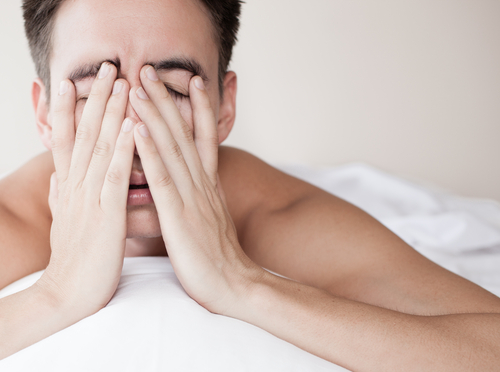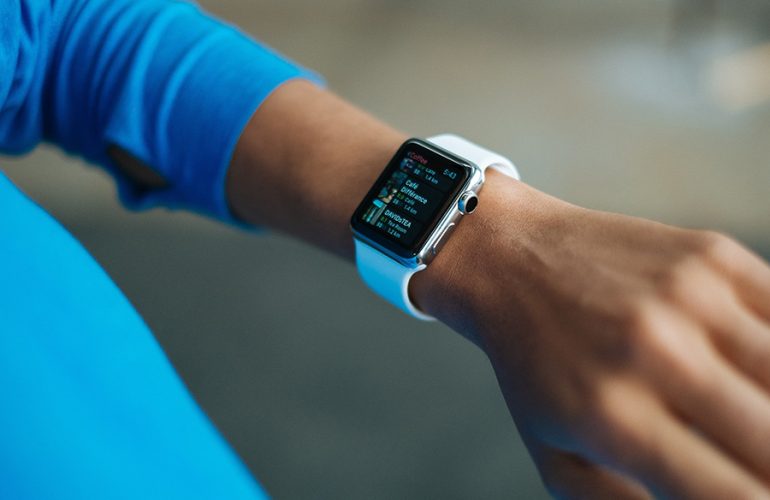[seasidetms_row][seasidetms_column data_width=”1/1″][seasidetms_text]
When we think about the typical sleep apnea patient, we often picture a heavyset man over forty years old with a thick neck and an earth-rattling snore. And while this image often does fit the profile of a sleep apnea patient, it by no means represents a complete picture of the demographic of sleep apnea sufferers.
Contrary to popular belief, sleep apnea patients come in all shapes, sizes, races, genders, and can even have symptoms atypical of those common for sleep apnea. For instance, not all sleep apnea sufferers snore, many are not obese or even overweight, and not all of them are male.
Here we discuss the prevalence of sleep apnea in women and why they are often an under-diagnosed and under-served population suffering from this sleep disorder.
Women with Sleep Apnea
Obstructive sleep apnea (OSA) is a sleep-related breathing disorder in which either the throat muscles collapse, the tongue falls back into the airway, or enlarged tonsils and/or adenoids impede air flow. When your airway becomes cutoff, the brain has to wake itself to signal the respiratory system to kick back into gear. This often leads to breathing resuming with loud gasps, snorts, or body jerks that may wake you from your slumber and disrupt your sleep.
When you wake multiple times throughout the night, your body and mind don’t get the rest they need to function, 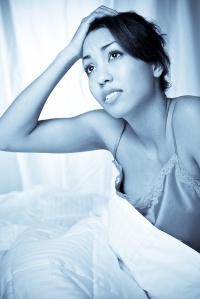 leaving you tired and drained during the daytime. According to the American Academy of Sleep Medicine, it is estimated that as many as 26% of adults aged 30-70 years have obstructive sleep apnea. Men are twice as likely to have sleep apnea than women. However, men are often diagnosed with sleep apnea almost 8 times more often than women.
leaving you tired and drained during the daytime. According to the American Academy of Sleep Medicine, it is estimated that as many as 26% of adults aged 30-70 years have obstructive sleep apnea. Men are twice as likely to have sleep apnea than women. However, men are often diagnosed with sleep apnea almost 8 times more often than women.
If women are half as likely to have OSA as men, but are diagnosed and treated for it only an eighth of the time, something must be wrong. Where does the problem lie? In patient reporting, doctor evaluation, varying symptoms, or a combination of all of the above?
Under-diagnosis and Misdiagnosis for Women with Sleep Apnea
When it comes to reporting sleep troubles, women are much more likely to discuss their sleep problems with their primary care providers. Unfortunately, because of a combination of factors, women with sleep apnea are often diagnosed and treated for other sleep disorders or get treated for comorbid conditions that are typical for sleep apnea patients. It is commonly known within the sleep field that women with sleep apnea present differently than men. They often don’t have the stereotypical body type and don’t always say they are sleepy. Many will say they are fatigued, leading clinicians to think they have insomnia.
Possible Reasons Women aren’t Diagnosed with Sleep Apnea
- Many women talk with their general practitioners about their sleep problems rather than a sleep specialist. Some these doctors have preconceived notions about what a typical sleep apnea patient looks like, and may overlook the reported symptoms by women when they don’t fit the common portrait.
- Women are less likely to report loud, chronic snoring. Women’s symptoms are often slightly different than men’s: Snoring is usually much lighter.
- Breathing problems during sleep are more subtle. Women tend to have lower apnea/hypopnea indexes (AHI). Apnea events are usually shorter in duration and frequency than men’s are.
- Women usually report different, bothersome symptoms than men that may lead to misdiagnosis of other disorders, including fatigue, insomnia, headaches, mood disturbances, lack of energy, Restless leg syndrome and depression.
- Women with sleep apnea tend to be more obese with lower AHI than men. Women are more likely to be prescribed prescription medications (such as antidepressants) rather than a sleep study for further testing.
- Men are less likely to be observant to their bed-partner’s sleep disturbances than women are. Many men who
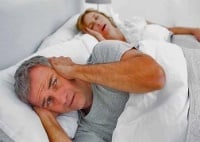 seek treatment for sleep apnea only do so because of concern by their bed-partner.
seek treatment for sleep apnea only do so because of concern by their bed-partner.
How can Women get Properly Diagnosed for Sleep Apnea?
Fortunately, doctors are receiving better education on the prevalence of sleep apnea in women and recognizing the increased risk factors they have for developing sleep apnea. However, with proper education for patients, women themselves can better recognize the risk factors for developing sleep apnea, and avoid improper diagnosis.
In addition to menopausal status and drug failure, clinicians need to be aware of the tendency to diagnose based on gender stereotypes. How women answer questions may mislead the clinician to assume the problem is insomnia because they report how they feel when they are trying to get to sleep. That makes it sound like insomnia., instead of sleep apnea.
Symptoms Typical of Women with Sleep Apnea.
- Snoring (even light snoring).
- Full or partial cessations of breathing during sleep
- fatigue
- Excessive daytime sleepiness
- Morning headaches
- General lack of energy during the day
- High blood pressure that is difficult to control with medication
- Frequent trips to the bathroom during the night
- Disturbed sleep/waking often in the middle of the night
- Un-refreshing sleep
- Fibromyalgia
- Under-active thyroid
Risk Factors
Women’s risk for developing sleep apnea increases as they transition through menopause. Women are three times more likely to have post-menopausal sleep apnea than pre-menopausal. Reasons for post-menopausal sleep apnea include weight gain and unclear hormonal changes. Prior to menopause many women may develop upper airway resistance syndrome, which can develop into sleep apnea after menopause.
Women aged 55-70 years are 14% more likely to have severe sleep apnea. Obese women aged 50-70 are 31% more likely to have sleep apnea. Women are more likely to develop comorbid conditions such as anxiety and depression than men.
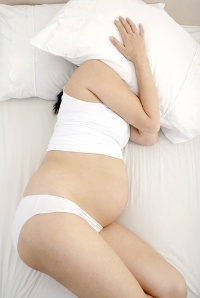 The risk for developing sleep apnea among women with polycystic ovarian syndrome can be as high as 70%.
The risk for developing sleep apnea among women with polycystic ovarian syndrome can be as high as 70%.
Pregnancy can increase the risk of developing sleep apnea. Untreated sleep apnea in pregnant women can lead to complications during pregnancy including high blood pressure, enlarged heart, pulmonary blood clots, more frequent preeclampsia, neonatal intensive care unit admissions, and cesarean delivery.
If you believe that your sleep troubles may be due to sleep apnea rather than another sleep disorder, contact us here at Sweet Sleep Studio to ask if a sleep study is right for you.
You can live a full life with this condition if you get the help you need and an adequate support system. Sleep disorders do not need to control your life.
For additional information regarding Abid Bhat MD, MBA or choosing the best sleep physician and facility, contact Sweet Sleep Studio
[/seasidetms_text][/seasidetms_column][/seasidetms_row]


